John Veverka & Associates
Main menu
- Home Page
- Our Range of Services
- Separator 2
- Interpretive Coaching
- Interpretive Planning
- Interpretive Plan Outline
- Interpretive Training
- John Veverka Resume
- Qualifications
- NEW Advanced Interp. Text Book
- Separator 11
- InterpNEWS
- Separator 12
- Library
- Expert in Interpretation
- JVA NEWS, Courses and Updates
- Certificates
- Separator 47
- Planning/Design of Interpretive Panels
- Separator 48
- Interpretive Writing
- Separator 49
- Interpretive Writing Course
- Separator 50
- Interpretive Trails Course
- Separator 56
- Interpretive Panels Course
- Separator 55
- Introduction to Heritage Interpretation Course
- Separator 54
- Interpretive Planning & Design of Marketing Brochures Course
- Training for Interp. Trainers
- Separator 57
- Interpretive Exhibits Course
- Separator 58
- Interpretive Master Planning Course
- Separator 59
- Interpretive Planning for Scenic Byways.
- Critiquing and Coaching Interpretive Staff
- Separator 31
- Advanced Interpretive Planning
- Interpretive Training Center Course Catalogue
- Separator 32
- Interp. for International Visitors course.
- Separator 33
- Interpretive Exhibits Evaluation
- Separator 34
- Interp. Center Feasibility Analysis Course.
- Separator 35
- Interp. for Commercial Tour Providers
- Separator 36
- Interpretive Researchers Guide for Visitor Studies
- Separator 37
- Separator 13
- Interp. Planning for Historic Homes
- Separator 14
- Heritage Interpretation Training Center
- Interpretive Planning for Botanical Gardens
- Separator 15
- An introduction to planning and presenting live interpretive programs and tours for Museum/Heritage Site Docents and Volunteers.
- Developing Marketing Plans for Heritage & Tourism Sites and Attractions
- Separator 16
- Interpretation Book Store
- Separator 17
- Heritage Interpretation Resource Center
- Interpretive Planning for Historic Farms
- Developing Successful Partnerships
- Developing Interpretive Outreach Programs
- Community Interpretation Planning
- Interpreting Gravestones and Historic Cemeteries
- Using Interpretation to Accomplish Management Objectives.
- An Interpreters Guide for Survival Economics.
- Separator 18
- Innovative Strategies for Interpretive Media and Services Planning.
- Separator 19
- A Curators Guide for Developing Gallery Tours.
- Advanced Interpretive Writing - Technical Publications
- Page 2
- Advanced Interpretive Services for Managers, Supervisors, Team Leaders and Sr. Staff.
- Separator 20
- Advanced Interpretation for Chiefs of Interp. - Interpretive Managers - Regional Interp. Specialists
- Interpreting Critical Issues.
- Separator 21
- Developing Commercial Interpretation for Resorts, Cruise Ships, Campgrounds and Tourism Attractions.
- Separator 38
- Planning and developing a new commercial tour guiding business.
- Separator 39
- Interpretive Evaluation, Visitor Studies and Site Assessment Center
- Separator 40
- The Center for Interpretive Planning Advancement & Excellence.
- Developing Requests for Proposals (RFPs)
- Separator 41
- Planning and Facilitating Focus Workshops
- Separator 42
- InterpNEWS Advertising Details
- Planning for Interpretive Experiences
- 40 Years a Heritage Interpreter
- Separator 43
- Interpretive Techniques - The Rest of the Story Course
- Separator 44
- Certified Professional Interpretive Planner Certificate
- Certified Professional Interpretive Program
- Certified Professional Interpretive Trainer certificate program.
- Separator 53
- Certified Professional Heritage Interpreter certificate program.
- Separator 52
- Certified Professional Interpretive Writer certificate program.
- Visitor motives for attending interpretive programs.
- Separator 45
- Exhibit Rehab Course
- Separator 46
- Developing Training Workbooks & Manuals
- Separator 22
- Planning for Railroad Museums and Sites.
- Separator 51
- Climate Change Interpretation Course.
- Separator 23
- When there's nothing left but the story - interp. storytelling.
- Separator 24
- Interpreting Legends Myths and Fables
- Separator 25
- InterpSHARE - Seminars 2022
- Separator 26
- Interpreting Invasive Species
- Separator 27
- Interpretiing Edible Insects
- Separator 28
- Interpretaive Planning for Climate Change
- Separator 29
- HITC Climate Crisis Resource Center
- Separator 30
- Separator 5
- PUP Members Only
- Starting a new Interp Consulting Business
- Panels 4 Week Course
- Separator 8
- Interpretive Writing - 4 Week Course
- Marketing - 4 Week Course
- Separator 7
- Intro to Interpretation - 4 Week Course
- Separator 9
- Interp Climate Change - 4 Week Course
- Separator 10
- Exhibit Rehab 4-Week Course
- Separator 6
- Level 1
- Johns Interpreters Blog
- Separator 4
- Economics for Heritage Interpreters
Johns Interpreters Blog
www.heritageinterp.com
Veverka's Blog for Heritage Interpreters
jvainterp@aol.com
October 3rd, 2023
Today -
-
These are timely past interpretive resourse issues. If you want a copy (sent as a PFD)
just send me an e-
.

Extreme climate change(Killer Heat -
Visit my new Climate Crisis/interpretation Resource Center:
http://www.heritageinterp.com/hitc_climate_crisis_resource_center.html
-
3 October 2023 Hi and welcome to my first October 2023 blog. I had a lot going on for the summer of 2023-
http://www.heritageinterp.com/economics-
-
Check out my new MUFON page: http://www.heritageinterp.com/jv-
I 'm training to become a formal UFO Investigator in Michigan.

Visit the website page for more details.
-
Thanks to a nice grant to cover my new computer and computer publishing programs, all issues of InterpNEWS will be sent out FREE again.
http://www.heritageinterp.com/interpnews.html
Our May/June Issue -
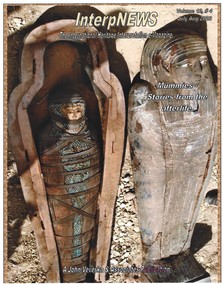

-
InterpNEWS – May-
In this issue
-
-
-
-
-
-
-
-
-
-
-
-
-
-
-
-
-
-
-
Mummies -
In this very special issue interpreting mummies: stories from the afterlife.
-
-
-
-
-
-
Marco Margaritoff | Edited By Erik Hawkins
-
-
-
-
Charlotte Edwards
-
-
-
-
-
-
-
-
-
-
http://www.heritageinterp.com/interpnews.html
-
Updated two climate courses for Sep/Oct 2023. Start a course anytime -
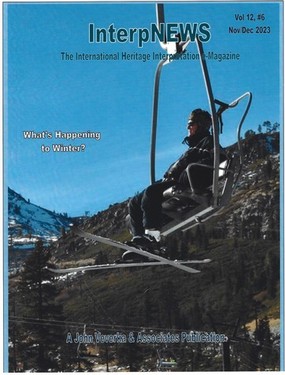
Climate change summer surprises -
"What Happened to Winter"?
1. Interpreting the Climate Crisis -
2. Interpretive Planning for Programs, Exhibits, Panels and Related Services To Help You to Interpret Climate Change and Global Warming Issues to Your Audiences, Communities and Regions.
13 Units, 4 CEU's $250.00. Our Climate Change special resource issues will be included.
Interpretive Planning for Climate Change (heritageinterp.com)
Visit my new Climate Crisis/interpretation Resource Center:
http://www.heritageinterp.com/hitc_climate_crisis_resource_center.html
-
New October Interpretive Stories to Share
Mysterious and 'beautifully carved' life-
discovered in Saudi Arabian desert
By Jennifer Nalewicki published 3 days ago
Life-
but archaeologists aren't sure who created them and when.
The mysterious camel carvings in the Saudi Arabian desert were likely created thousands of years ago. Virtual white lines are drawn over the carvings to enhance them for viewers. (Image credit: Maria Guagnin, et al)
Archaeologists have documented a cluster of carvings depicting camels on a rock outcropping near the southern edge of Saudi Arabia's Nafud desert.
The monumental artwork portrays a dozen life-
While the site, named Sahout, had been recognized by other archaeologists for some time, this is the first time someone noticed the camel carvings on the outcropping.
"We learned about the site from another paper — but the panel was difficult to find because its location wasn't precise, and this isn't an easy landscape [to navigate]," study lead author Maria Guagnin, a postdoctoral researcher at the Max Planck Institute of Geoanthropology in Germany, told Live Science.
Finding the outcropping in the sand dunes wasn't the only challenge. Because the carvings have newer etchings overlapping the camels, there's an added layer of mystery surrounding which culture created the artwork and when.
https://www.livescience.com/archaeology/mysterious-
-
'They seemed primed to take over': How the Great Dying doomed the 'beast tooth' and set the stage for the dawn of the dinosaurs
By Michael Mann published 1 day ago
"Much as we can only wonder today what knowledge was lost in the ransacking of the Library of Alexandria, we can also ponder what sort of magnificent creatures born of the Cambrian explosion were lost."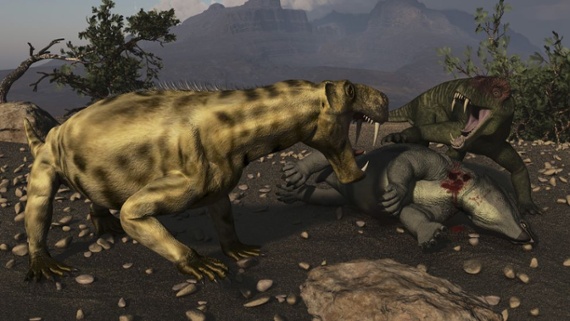
Inostrancevia is a genus from the extinct group Theriodontia that appeared during the Middle Permian. (Image credit: Stocktrek Images/Getty Images)
The excerpt below is taken from "Our Fragile Moment: How Lessons from Earth's Past Can Help Us Survive the Climate Crisis" (Hachette Book Group, 2023), by Michael Mann. It looks at how climate change following the Cambrian explosion caused the biggest mass extinction on Earth — dooming the creatures set to dominate and set the stage for dinosaurs to rule.
The mechanisms that can freeze the planet, as was the case with Snowball Earth can also lead to inhospitably hot climates, when enough carbon dioxide enters the atmosphere. Arguably the greatest extinction event of all time — called the Great Dying — appears to have resulted, at least in part, from a massive heat-
Is this ancient event a possible analog for a sixth, human-
In the late Proterozoic eon, around 550 million years ago, Earth had thawed out from a series of major glaciations, perhaps even global snowball conditions. The end of the Proterozoic marked the beginning of a brand new era — the Paleozoic, which extended from around 540 million to 251 million years ago.
The first period of the Paleozoic — the Cambrian — saw a remarkable explosion in the diversity of life, known, appropriately, as the Cambrian explosion. Most of the life that exists today emerged during the first 10 million years of that period, including the first complex multicellular life and familiar groups such as mollusks and crustaceans.
https://www.livescience.com/animals/extinct-
-
By Harry Baker published 3 days ago
On an expedition in Hawaii, a remote underwater vehicle filmed a dumbo octopus swimming with its ear-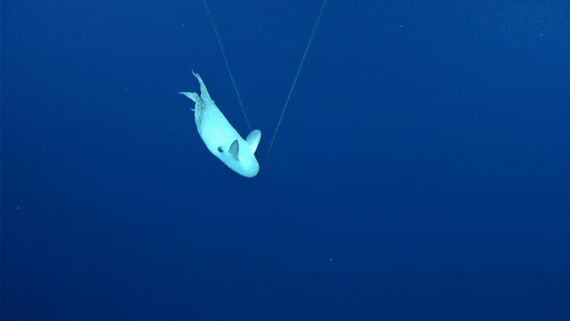
This video footage captured Sept. 13 by an ROV shows a dumbo octopus swimming with its ear-
Researchers exploring an underwater mountain in Hawaii's deep sea recently stumbled across a rare, "ghostly" dumbo octopus — one of the deepest dwelling octopuses on Earth — flapping its large ear-
The unidentified species of dumbo octopus, from the genus Grimpoteuthis, was spotted Sept. 13 by researchers aboard Ocean Exploration Trust's (OET) Exploration Vessel "Nautilus." The team was exploring a seamount in the north of Papahānaumokuākea Marine National Monument (PMNM) — one of the world's largest marine protected areas — using a remotely operated vehicle (ROV) at a depth of around 5,500 feet (1,675 meters) when they came across the pale white cephalopod, researchers wrote in a statement.
Video footage from the dive, which was live-
"Oh, look at the flappy ears!" one researcher exclaimed during a commentary of the live feed. "I'm so glad we got to see this beautiful creature," another added, "I've never seen one before."
https://www.livescience.com/animals/octopuses/watch-
-
the Eurasian steppe'
By Owen Jarus published 10 days ago
Archaeologists in Kazakhstan have discovered a hexagonal pyramid
that served as a burial site in the Bronze Age.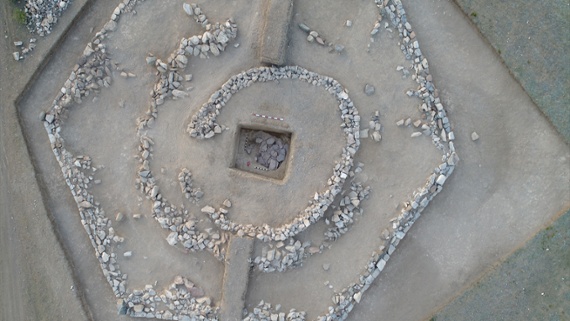
An aerial view of the hexagonal-
An aerial view of the hexagonal-
Archaeologists in Kazakhstan have discovered a 3,800-
The discovery is not like anything "found before in the Eurasian steppe," according to a statement from Eurasian National University in Kazakhstan.
"This pyramid on the territory of Eastern Kazakhstan was found this year," Ulan Umitkaliyev, the head of Eurasian National University's archaeology and ethnology department who is leading excavations at the site, told Live Science in an email. "It is hexagonal in shape, with megaliths weighing up to 1 ton [0.9 metric tons] placed in each corner."
While archaeologists use the term "pyramid" or "step pyramid" to describe it, the Bronze Age monument is unlike the pyramids found in Egypt. Its outer stone walls form a hexagon, the structure's inner walls look like a maze that leads to a grave at its heart. Parts of it were once covered by an earthen mound, Umitkaliyev added. It's not clear if there was ever a roof over part of the structure or whether it was entirely open air.
The people who lived in this region at the time built many graves and stone monuments and engaged in metal working and making jewelry. Their economy may have been partly pastoral — herding large numbers of animals across the Eurasian steppes.
https://www.livescience.com/archaeology/bronze-
-
By Annie Corinne Shaink published 10 days ago
These stunning locations feel out of this world, but are actually right here on Earth.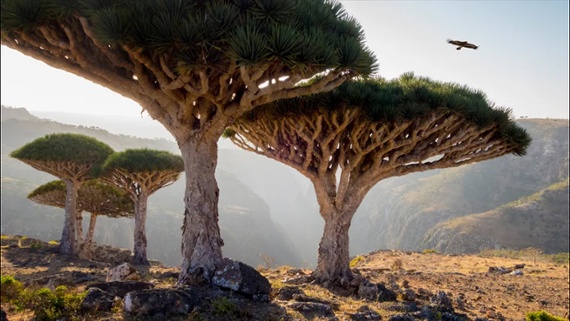
(Image credit: John M Lund Photography Inc via Getty Images)
While we often look to the stars, planets and moons for bizarre and fantastic sites, the Earth itself remains home to vast and varied landscapes and structures, fit for a science-
https://www.livescience.com/planet-
-
people let down by the blue pill
Scientists say a synthetic compound derived from Brazilian wandering spider venom could treat people with erectile dysfunction for whom drugs like Viagra don't work.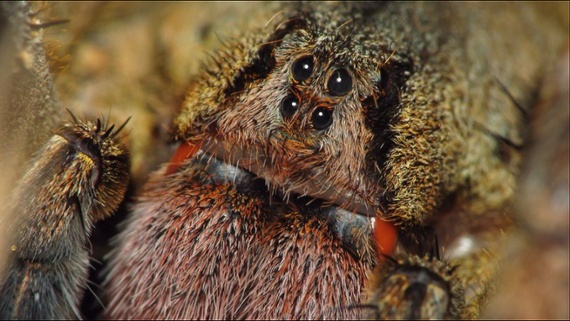
Brazilian wandering spiders are some of the most venomous spiders on Earth,
and their bite can be fatal. (Image credit: Joao Paulo Burini via Getty Images)
A spider whose venom triggers prolonged and painful erections may hold the key to more inclusive treatments for erectile dysfunction, scientists in Brazil report.
The researchers are testing a new drug derived from the venom of the Brazilian wandering spider (Phoneutria nigriventer), also called the banana spider because it is sometimes accidentally exported in banana shipments. It is one of the most toxic species of spiders in the world.
Among other symptoms — including increased blood pressure, nausea, abdominal cramps and convulsions — this spider's bite can cause a "prolonged and painful erection, which can lead to necrosis of the penis," meaning death of its tissues, Maria Elena de Lima, a professor of biomedicine and medicine at the Santa Casa Belo Horizonte hospital in Brazil who is leading the research, said in a translated statement.
However, in initial tests, a boner-
The team hopes the molecule will eventually be an alternative to the drugs that are currently available to treat erectile dysfunction, such as Viagra and Cialis. These currently available treatments don't work for all patients and pose risks for those already taking nitrates — which are often prescribed for chest pain — as the combination can cause a dangerous drop in blood pressure.
While erectile dysfunction treatments are generally thought safe for people with high blood pressure who are otherwise healthy, they are not suitable for patients who, in addition to high blood pressure, also have urinary tract problems. The drugs may also pose risks for people with severe heart or liver problems.
https://www.livescience.com/health/medicine-
-
World's oldest aquarium fish 'Methuselah' could be decades older than we originally thought, DNA clock reveals
By Harry Baker published 10 days ago
A new study has found that the famous Australian lungfish Methuselah, who first arrived in the U.S. in 1938, could be up to 101 years old.
The Australian lungfish "Methuselah" swims in her tank at Steinhart Aquarium in California. She was believed to be 84 years old but a new study suggests she could be over 100. (Image credit: Steinhart Aquarium)
The world's oldest aquarium fish, a lungfish named Methuselah, may actually be decades older than researchers originally thought and may even be over 100 years old, a new study finds.
Methuselah is a female Australian lungfish (Neoceratodus forsteri) that resides at Steinhart Aquarium in San Francisco, California. She first arrived at the aquarium in 1938 after being sent to the U.S. along with more than 200 other fish from Fiji and Australia.
Aquarium staff have never been sure how old Methuselah is, but until now the best guess was that she is 84 years old, which makes her the oldest known fish in captivity. (In the Bible, Methuselah was a man who reputedly lived to be 969 years old.)
The elderly fish, who loves belly rubs and is hand-
In the study, researchers compared Methuselah's DNA to the genetic material of other Australian lungfish to work out how much wear and tear her DNA had accumulated. The results suggest that she is most likely age 92, but the level of uncertainty with this type of experiment means she could be up to 101 years old. The study will be published later this year.
https://www.livescience.com/animals/fish/worlds-
-
Paleolithic 'art sanctuary' in Spain contains more than 110 prehistoric cave paintings
By Laura Geggel published 13 days ago
Cave paintings and engravings dating to at least 24,000 years ago were discovered
near Valencia in Spain.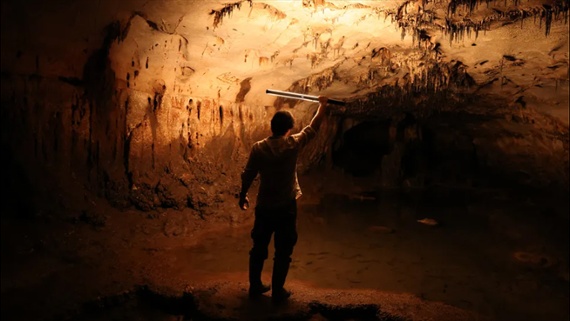
An archeologist illuminates a part of the cave in Spain that's rich with artistic motifs.
(Image credit: A Ruiz-
Archaeologists have discovered more than 110 prehistoric cave paintings and engravings dating to at least 24,000 years ago near Valencia, Spain.
The Paleolithic, or Stone Age, rock art is "arguably the most important found on the Eastern Iberian Coast in Europe," the team said in a statement about the finding.
Locals and hikers have long known about Cova Dones (also spelled Cueva Dones), a 1,640-
At first, the team found four painted motifs, including the head of an aurochs (Bos primigenius), an extinct cattle species. Additional work in 2023 revealed the site as a "major Palaeolithic art sanctuary," the researchers wrote in a study published Sept. 8 in the journal Antiquity.
"When we saw the first painted auroch[s], we immediately acknowledged it was important," Aitor Ruiz-
Spain has the most Paleolithic cave-
https://www.livescience.com/archaeology/paleolithic-
-
By Sascha Pare published 13 days ago
A video of a stinkhorn fungus — a 10-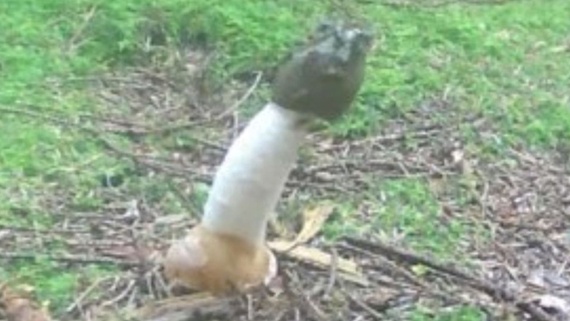
Scientists have captured a bewitching new time-
The mushroom is the visible part of a stinkhorn fungus (Phallus impudicus), which commonly grows near rotting wood and plants and can reach up to 10 inches (25 centimeters) above the ground. The stem is topped by a bell-
"The smell of stinkhorns has been described as similar to decomposing flesh, rotting feces, and sewage," the University of Florida said on its website. Despite their unappetizing odor, stinkhorns are edible. "The flavor of Phallus impudicus, known as the common stinkhorn, is reported to resemble hazelnuts when eaten in its egg state," the website said.
Stinkhorns emerge from a small, egg-
https://www.livescience.com/planet-
-
Hi folks -
Well, that's it for this blog. Hope you found something of interest. I'll start looking for more unusual stories to provoke you with. Any comments about my blog please feel free to let me know if you like it.
John Veverka -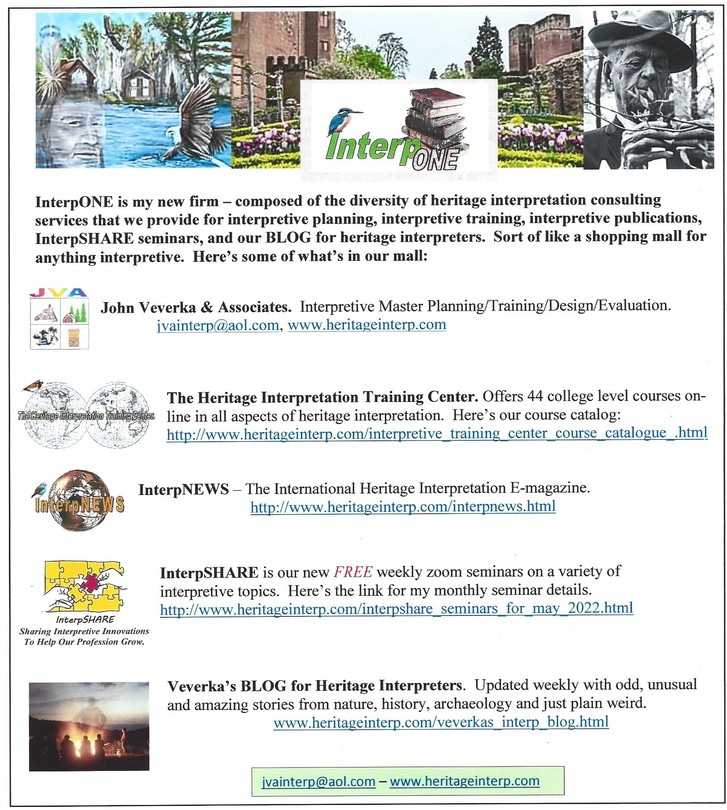
xxxxxxxx